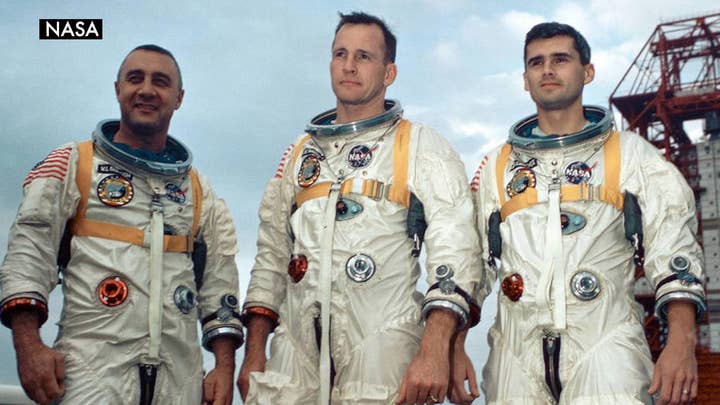NASA's Parker Solar Probe: Cape Canaveral gets set for launch day
Tony Taliancich, launch director for ULA, describes final preparations at Cape Canaveral Air Force Station for NASA's historic mission to 'touch the sun.' The mission hopes to gain a wealth of data on our solar system's star.
CAPE CANAVERAL – NASA plans to make history Saturday when its Parker Solar Probe blasts off on an epic mission to the Sun. Workers at Cape Canaveral are making final preparations for the launch, which will take the spacecraft on an incredible journey through the Sun’s corona.
Lifted by 2 million pounds of thrust, Parker will blast off aboard a United Launch Alliance Delta IV Heavy rocket from Space Launch Complex 37 at Cape Canaveral Air Force Station, Fla. The 65-minute launch window for the mission opens at 3:33 a.m. EDT on Aug. 11, 2018.
Speaking to Fox News on the launch pad, Brian Taliancich, director and general manager of launch operations at ULA, said that “everything is coming together perfectly,” for the launch.
NASA'S PARKER SOLAR PROBE SET TO 'TOUCH THE SUN' ON HISTORIC MISSION
As Taliancich spoke, technicians traveled back and forth to the launch tower under a baking Florida sun. A sign warned visitors to the launch site to beware of the alligators that inhabit the sprawling Air Force base.
A veteran of about 200 space launches, both during his time in the U.S. Air Force and the space industry, Taliancich said that all launches are high-pressure events.
“You never lose the stress levels associated with launch, there’s a ‘million little miracles’ making these things leave the pad,” he said.
SOLAR ECLIPSE, CRASHING SPACECRAFT, VOLCANOES AND MORE: BIGGEST SCIENCE STORIES OF 2017
The probe, which is housed inside a payload faring, was moved to Space Launch Complex 37 on July 30. The following day, the spacecraft was lifted to the top of the Delta IV Heavy rocket. Sitting atop the rocket, the top of the faring is more than 230 feet above the ground.
Taliancich explained that just before sunset on Friday technicians will be moving the launch tower back. “Then we will prepare all the ground systems and get ready for cryogenic operations, fueling the rocket, that starts around 10pm,” he said. “Then we get into actually fueling the rocket, preparing it for launch – you’re adding the super cold liquid oxygen and liquid hydrogen to fuel the rocket.”
“We check out all the systems, make sure that that range systems are ready to go and confirm all the communications,” Taliancich added. “Then we get into the final countdown.”
MASSIVE MARS DISCOVERY: ORGANIC MOLECULES 'FUNDAMENTAL TO OUR SEARCH FOR LIFE' FOUND BY NASA ROVER
There is a “hold point” 4 minutes before launch, when technicians make sure that everything is ready. “Then at ‘T-Minus 4’ it’s an automated count,” Taliancich explained. “There are no [specific rocket launch] buttons.”
Parker’s ascent into the Florida skies will be just the first stage of an audacious journey.
On its closest approach, Parker will be 3.8 million miles from the Sun’s surface. This is seven times closer than the previous closest spacecraft, Helios 2, which came within 27 million miles of the Sun in 1976.
ASTEROID DISCOVERY: RARE SPACE ROCK FRAGMENT FOUND
The average distance between the Sun and Earth is 93 million miles.
The probe is expected to reach the Sun in November. Harnessing Venus’ gravity, Parker will complete seven fly-bys over seven years to gradually bring its orbit closer to the star. On its closest approach, the probe will be traveling at approximately 430,000 mph.
Scientists expect the $1.5 billion mission to shed light not only on our own dynamic Sun, but the billions of other yellow dwarf stars — and other types of stars — out there in the Milky Way and beyond. While granting us life, the Sun also has the power to disrupt spacecraft in orbit, and communications and electronics on Earth.
The Associated Press contributed to this article.
Follow James Rogers on Twitter @jamesjrogers



